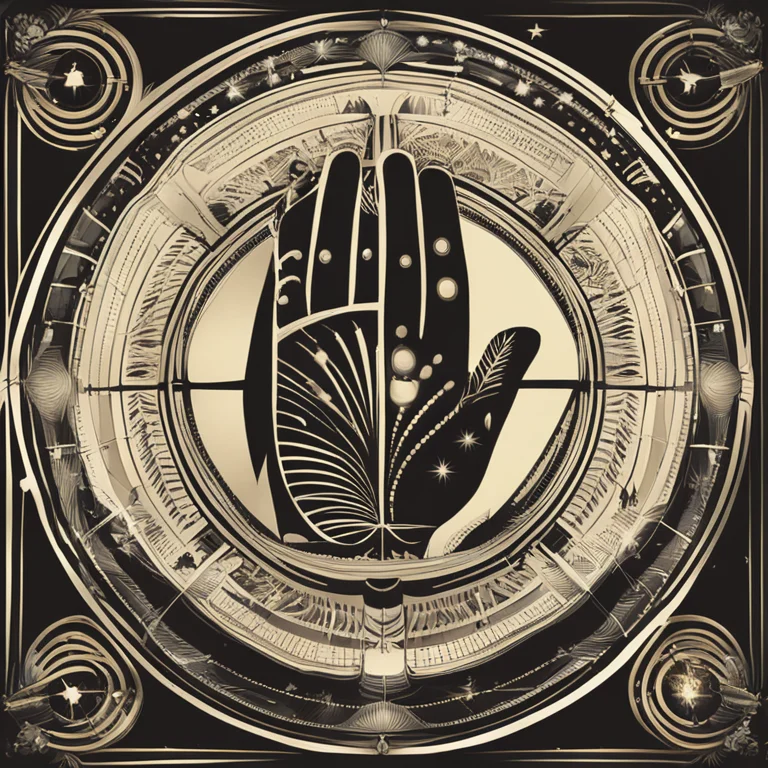
Is Palmistry Credible? A Rational Look at Hand Reading
Explore the realm of palmistry to evaluate its credibility and understand the role it plays in modern fortune-telling practices.
article by Nora Pennington
The Essence of Palmistry
In our journey to comprehend our lives and futures, many of us turn to various forms of divination. Palmistry, or chiromancy, is one such practice that purports to reveal traits and life paths by interpreting the lines and features on one's hands. This ancient practice, dating back thousands of years, continues to pique the curiosity of modern seekers. Yet the question remains—can palmistry be believed, or is it merely a pseudoscience wrapped in the shroud of mystical allure? As we delve into palmistry's methodologies and claims, we will take an objective stance to determine its place in contemporary spiritual exploration.

Critical Scientific Analysis
From the perspective of mainstream science, palmistry is often classified under pseudosciences due to the lack of empirical evidence supporting its predictive capabilities. Researchers have meticulously searched for reproducible results and statistical affirmations but have consistently fallen short of establishing a concrete scientific basis for palmistry. This, however, does not discount the subjective experiences of individuals who testify to its personal significance. Our exploration here will balance the lack of scientific endorsement with the cultural and psychological aspects that keep palmistry alive in the 21st century.

The Psychological Dimension
Despite skepticism from the scientific community, palmistry has a definitive psychological dimension. Those who practice and believe in it often report a sense of comfort and insight from readings. Psychologists understand this as a form of the Forer effect—a tendency for individuals to find personal relevance in generalized statements. This effect, present in various forms of fortune-telling, may not validate the objective truth of palmistry but suggests a therapeutic value to its ritual for many participants, rooted in introspection and self-reflection.

Cultural and Historical Standpoint
Examining palmistry through historical and cultural lenses reveals its rich tapestry woven into various traditions across the globe. From ancient India to classical Greece through Chinese I Ching, palmistry's presence in historical records suggest it is more than mere coincidence or folly. As a cultural artifact, palmistry serves as a narrative mechanism, which, regardless of demonstrable predictive power, continues to offer insight into the human condition through a symbolic language that spans centuries and civilizations.

Modern-Day Palmistry and Technology
Advancements in technology have also impacted palmistry, with biometric software and algorithms now attempting to enhance and corroborate readings. The use of such technologies may point towards a future where the lines on our palms are cross-referenced with vast data sets, looking for patterns that might lend a more empirical approach to palmistry. It remains to be seen whether technology can bridge the gap between palm reading and established scientific principles, or simply provide a new facade for this ancient art.
The Personal Choice to Believe
Ultimately, whether one chooses to believe in palmistry comes down to personal worldview and experience. Empirical evidence may not substantiate palmistry, yet its practice continues, embraced by those who find meaning in its rituals. As with any belief system outside the dominion of science, palmistry may best be appreciated not as a definite map of destiny, but as a reflective tool, an art form, and a tradition that can bring subjective insight and comfort to its practitioners.
Published: 1/11/2024
Modified: 1/11/2024
More predictions
Come back here soon to learn more about yourself and your future


Palm Lines: A Guide to Your Hands' Secrets
Learn the art of reading palm lines with our straightforward guide. Discover what your hands reveal about your personality, destiny, and life!


The Impact of the Jupiter Mount in Palmistry
Discover the impact of the Jupiter Mount on your life through palm reading. Learn about its meaning and significance in palmistry.